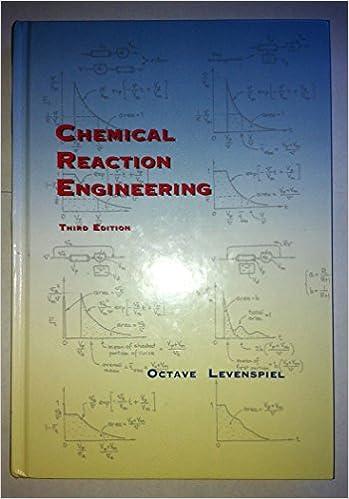Mechanism for enzyme catalyzed reactions. To explain the kinetics of enzyme- substrate reactions, Michaelis Menten (1913) came
Question:
Mechanism for enzyme catalyzed reactions. To explain the kinetics of enzyme- substrate reactions, Michaelis Menten (1913) came up with the following mechanism, which uses an equilibrium assumption![A+E=X k XR+E with K = [X] [A][E]' and with [E] [E] + [X]](https://dsd5zvtm8ll6.cloudfront.net/si.question.images/images/question_images/1695/9/1/3/459651595f306d8a1695913456524.jpg)
and where [E0] represents the total enzyme and [E] represents the free unattached enzyme.
G. E. Briggs and J. B. S. Haldane, Biochem J., 19, 338 (1925), on the other hand, employed a steady-state assumption in place of the equilibrium assumption![k A+EX k k3 X-KR+E with d[X] dt = 0, and [E] [E] + [X] =](https://dsd5zvtm8ll6.cloudfront.net/si.question.images/images/question_images/1695/9/1/3/4856515960d79c101695913483256.jpg)
What final rate form - rA in terms of [A], [E0], k1, k2, and k3, does
(a) The Michaelis-Menten mechanism give?
(b) The Briggs-Haldane mechanism give?
Fantastic news! We've Found the answer you've been seeking!
Step by Step Answer:
Related Book For 

Question Posted:





